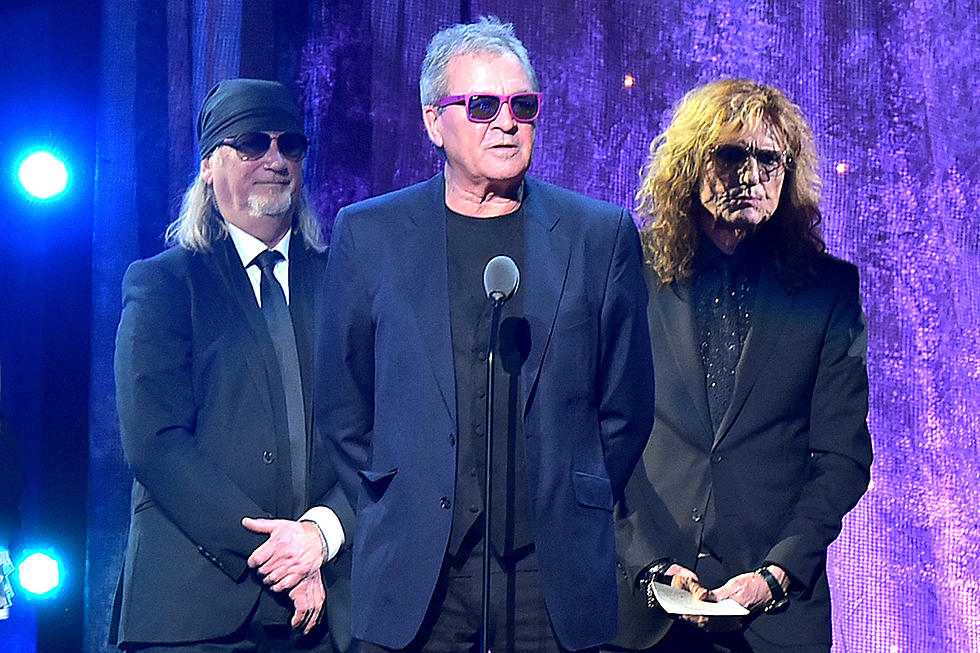40 Years Ago: Ritchie Blackmore’s Rainbow Release Their Debut Album
August 1975 signaled a new beginning for one of hard rock’s greatest stars, Ritchie Blackmore, who unveiled the first fruits of his brand-new band, Ritchie Blackmore’s Rainbow. The group featured the remnants of defunct boogie rockers Elf, including a singer named Ronnie James Dio.
Blackmore had established his legend as the driving force behind heavy metal godfathers Deep Purple, with whom he’d spent the better part of the previous decade and recorded no less than nine studio albums (and a handful of live ones) until abruptly announcing his departure in mid-1975. It didn't come as much of a surprise, since he'd been unhappy with Deep Purple for more than a year. It boiled down to control, ego and good old-fashioned musical differences.
There was also some pithy disagreements — like the guitarist’s dismay over his bandmates' refusal to record a cover of Quatermass' “Black Sheep of the Family” — and big-picture issues, namely Blackmore’s disinterest in the funk and soul influences being brought into Purple records by new Mk. III members David Coverdale and Glenn Hughes.
In any case, what began as an informal session to record that Quatermass song during a break in Deep Purple’s U.S. tour in the fall of 1974 accidentally laid the groundwork for Rainbow’s creation — once Blackmore and Dio discovered their strong musical rapport while co-writing “Sixteenth Century Greensleeves” as a potential B-side.
So after begrudgingly resuming his Purple duties long enough to complete the Stormbringer LP, Blackmore reconvened with Dio, drummer Gary Driscoll, bassist Craig Gruber and keyboardist Mickey Lee Soule at Hamburg’s Musicland Studios in February 1975 to start work on Rainbow’s first album, with producer Martin Birch behind the recording console.
The project was originally billed as a Blackmore solo record, which wouldn't have affected Deep Purple much, but by April the guitarist had performed his last gig with the band, and two months later, he officially announced he was leaving to launch Rainbow. Not so surprising given the music they made together and led by a revitalized Blackmore, who dug deep into his classical training to merge ancient forms and medieval music with the hard-rock formulas he had helped define in recent years.
There was the mystical riff-monger “Man on the Silver Mountain,” followed by the slow-waltzing “Self Portrait,” the lush and dreamy “Catch the Rainbow,” plus the evocative tandem of “Temple of the King” and “Sixteenth Century Greensleeves"— all of which encapsulated the so-called “castle-metal” magic unleashed by Blackmore and Dio’s songwriting partnership.
Not to be outdone, the hard-driving “Snake Charmer” brought things down to earth, while “If You Don't Like Rock 'n' Roll” revisited Elf’s charging boogie style. And there were two covers — the surprisingly playful “Black Sheep of the Family” and the driving, cowbell-powered instrumental “Still I'm Sad” — to round out Rainbow’s formidable introduction.
Ritchie Blackmore’s Rainbow successfully launched the group into the upper echelons of the hard-rock world as Deep Purple floundered after one more album with Tommy Bolin on guitar. Even though Rainbow's members, except for Dio, would soon be replaced by Blackmore in what would be the first of many rotating band lineups, the group would enjoy success well into the '80s, with no less than three different singers in the lead role.
See Rainbow and Other Rockers in the Top 50 Heavy Metal Albums of All-Time
Criminally Underrated Rock Albums
More From 103.7 The Loon










